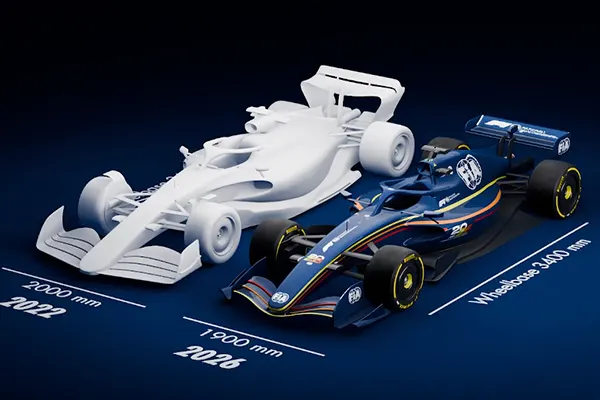Proposed 2026 F1 regulations may confuse fans with complex new modes and engine management, raising concerns over the sport’s accessibility.
The introduction of active aerodynamics with ‘X’ and ‘Z’ modes for wings, and engines featuring intricate energy management and an overtaking mode with the MGUK, has led to discussions around the sport and communication being overly complex. Is there a way to simplify things to enhance the spectacle?
James Vowles, Williams F1’s team principal, commented on the objectives behind these rules: “The aim is to transition to a different power unit formula, to shift to synthetic fuels, to move into a different environmental setting. I think that’s quite positive. Regarding the X and Z modes—just to clarify, the X mode effectively reduces drag on the straights, and the Z mode increases downforce in corners. I actually quite like the automation concept. It’s not that the drivers need to adjust anything on the steering wheel. We can optimise the car under those conditions. I’m quite comfortable with this complexity, and I think the world will quickly adapt. What we’re really discussing is how to make this product the pinnacle of motorsport, and what is the right formula to achieve this?”

Ayao Komatsu from Haas F1 emphasized the need to “see what we will have in terms of design freedom, especially on the aerodynamic side.”
“For now, I’m not sure that the draft regulations are balanced in terms of mandates. Thus, again, all these philosophies, how we present ourselves as the pinnacle of motorsport, in terms of engineering too, to have some freedom or perhaps a bit more freedom in aerodynamics, is also significant.”
Andrea Stella from McLaren F1 noted, “part of the complexity is more in the language than in the substance. When we discuss X-Mode, it’s akin to having DRS open, potentially even on the front axle. But the concept of opening the DRS is very well established and understood by the fans.”
“Also, I think part of the complexity that remains is mostly on the side of the power unit, due to the immaturity of the regulations. I believe that once they mature, they will become even simpler. Or at least, I hope that we can achieve both through development work and collaboration between the teams and the FIA.”
Mike Krack of Aston Martin F1 admits, “Yes, it’s very technical language. The Z mode, X mode, energy management, you know, in terms of complexity, I think we need to focus on the product, the fan, and the spectator. I’m a bit worried that by 2026, we might have press conferences or driver interviews talking about all these technical details that many people won’t understand and will lose interest because of that.”
“It’s something we need to be very careful about. If we have different energy management from one track to another or constraints on the car that make it faster or slower suddenly, how do we explain that? I think that’s something we really need to keep in mind.”

2026 F1 Regulations: Innovation or Overcomplication?. 2026 F1 Regulations: Innovation or Overcomplication?
- Alonso Revives Aston Martin’s Hopes with Sixth in Canada
- Following us on Facebook and Twitter
